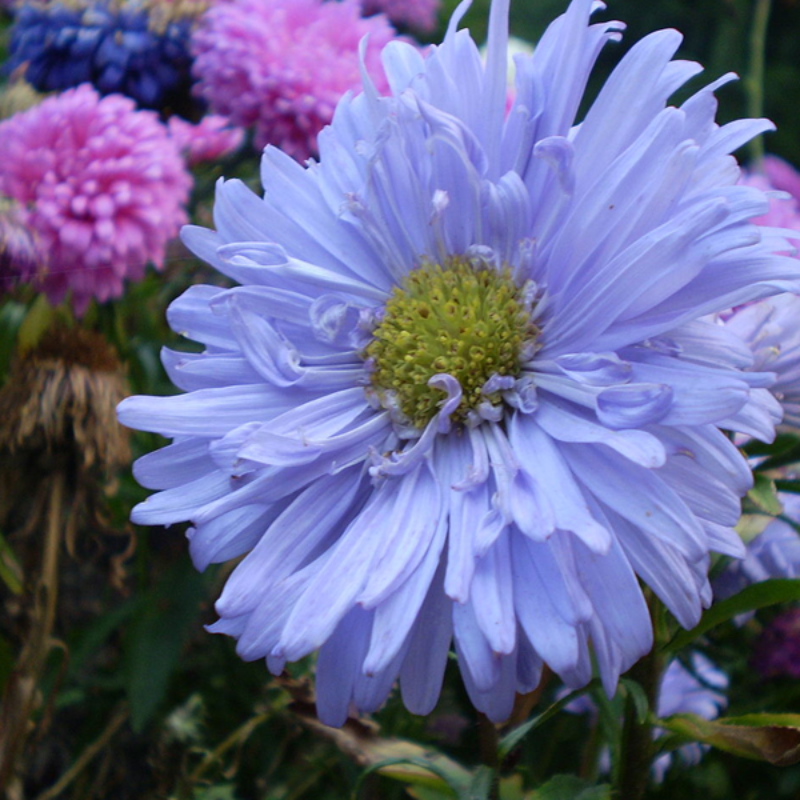- Species and varieties: Aster amellus, commonly known as the Italian Aster, is a popular variety of aster that produces light purple flowers. Other varieties include Aster novi-belgii (New York Aster) and Aster novae-angliae (New England Aster).
- Hybrid or heirloom: Asters can be found in both hybrid and heirloom varieties. Heirloom varieties are often prized for their historical significance and genetic purity, while hybrids may offer improved disease resistance and bloom size.
- Pruning and training: Asters benefit from regular deadheading to encourage continuous blooming. In late fall, cut back the stems to about 2 inches above the ground to prepare for winter. Pinching back the stems in early summer can promote bushier growth.
- Fertilization needs: Asters do not require heavy fertilization. A balanced, slow-release fertilizer applied in early spring can support healthy growth. Avoid over-fertilizing, as this can lead to excessive foliage growth at the expense of flowers.
- Hardiness zones: Asters are suitable for USDA hardiness zones 3-8. They can tolerate a range of temperatures but perform best in cooler climates.
- Climate requirements: Asters prefer full sun to partial shade and well-drained soil. They thrive in cooler climates and can tolerate light frost. They require moderate watering, especially during dry periods.




